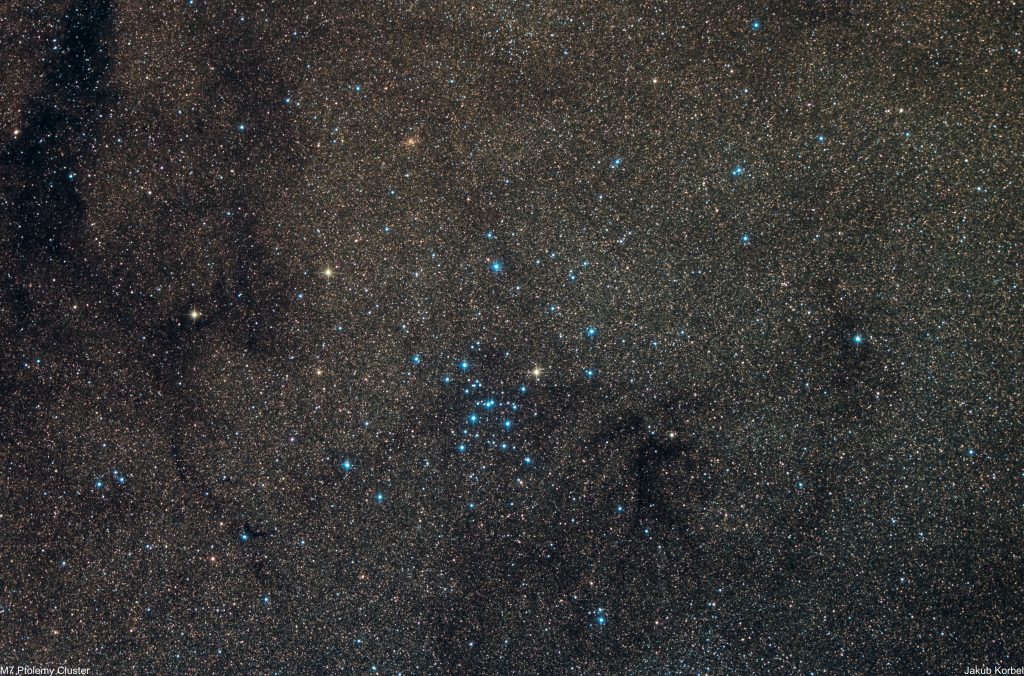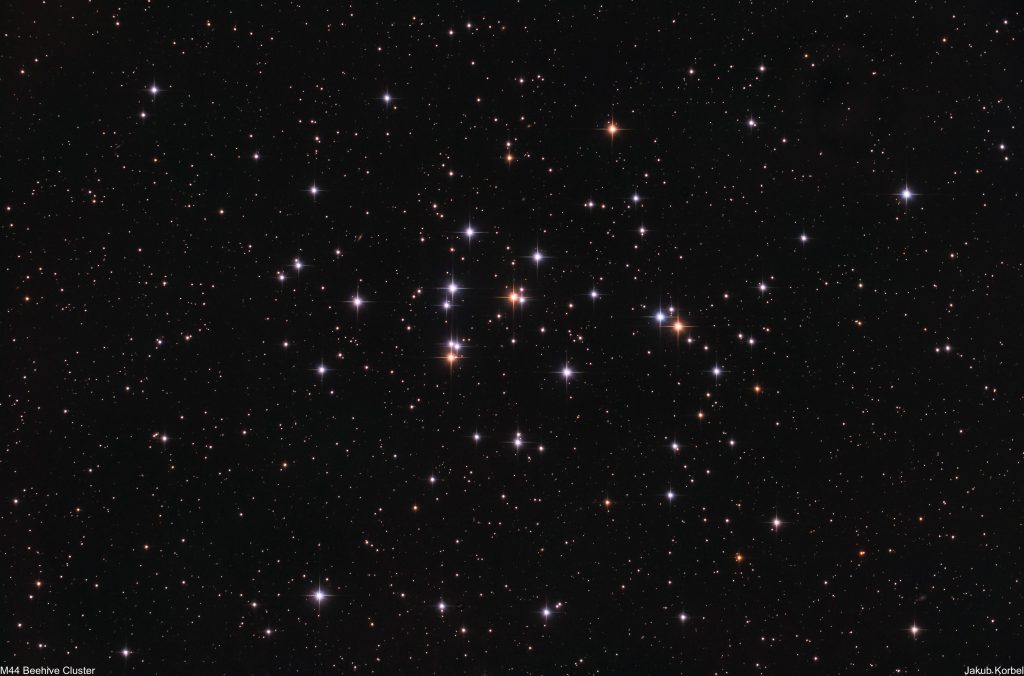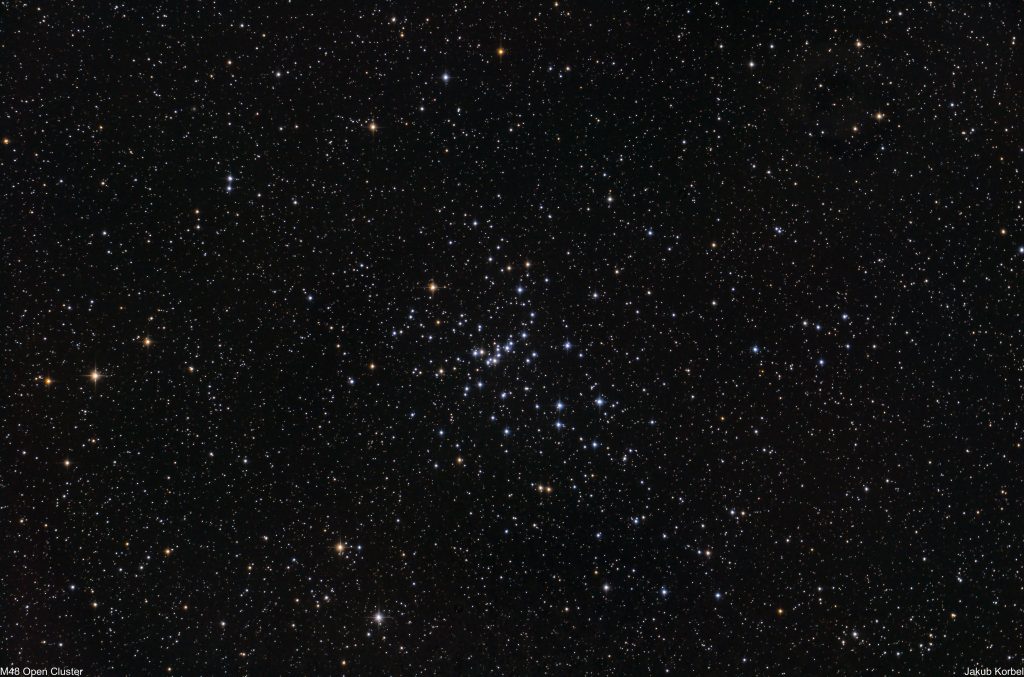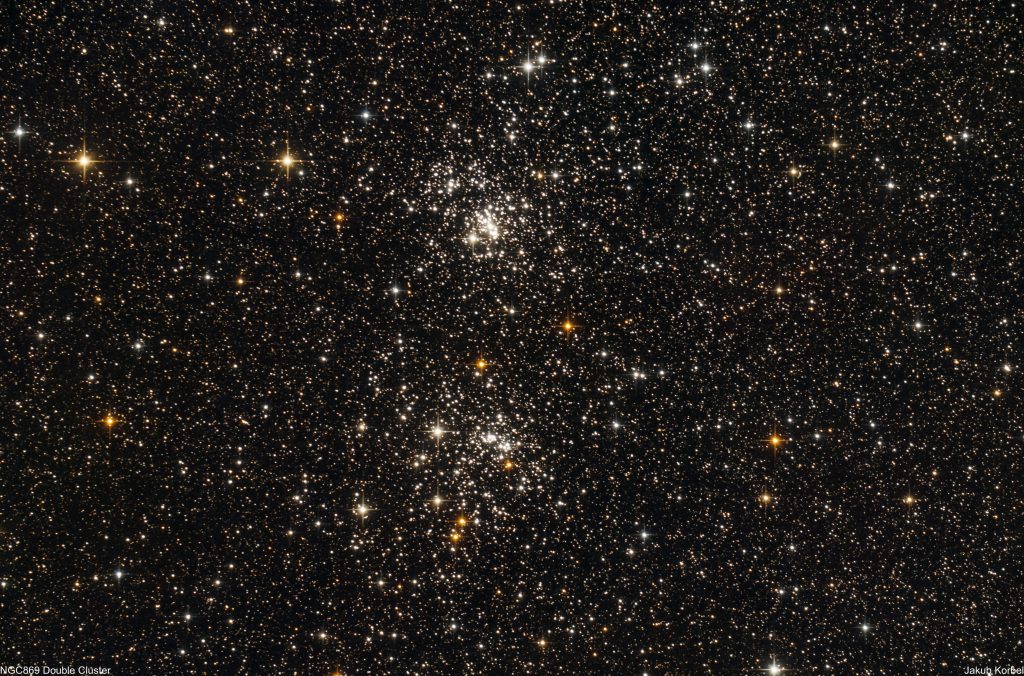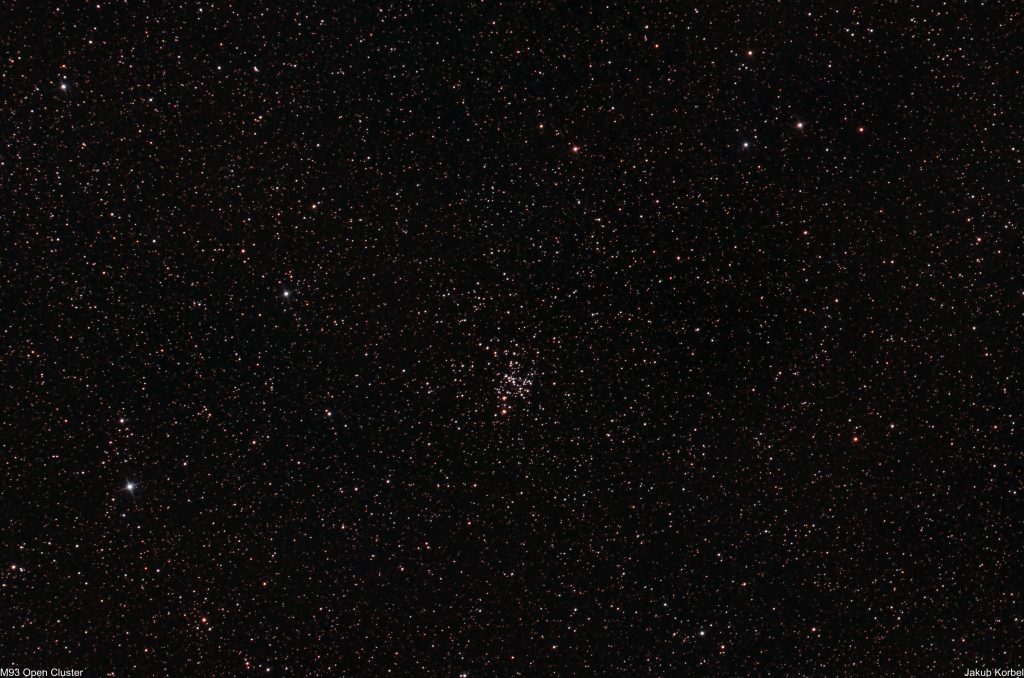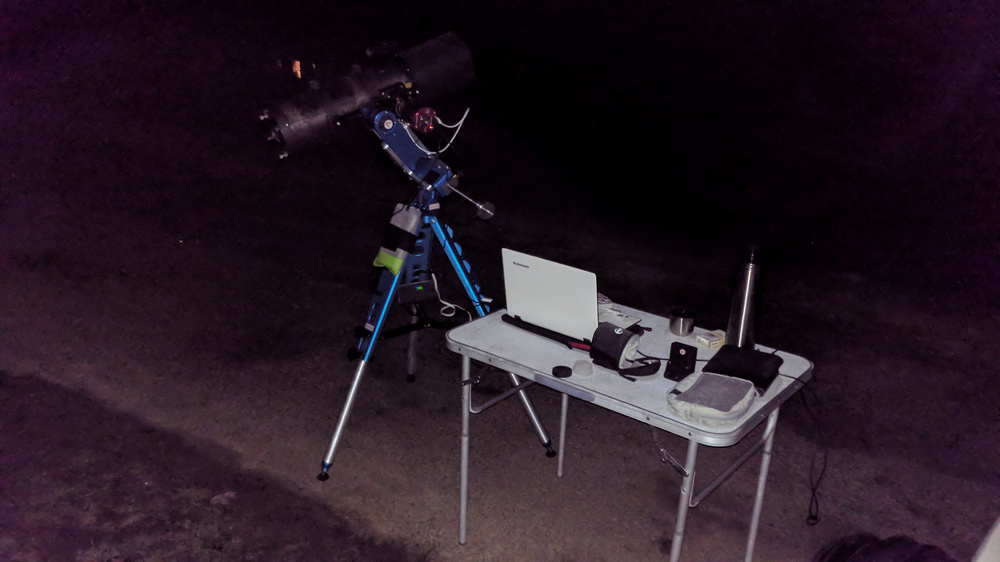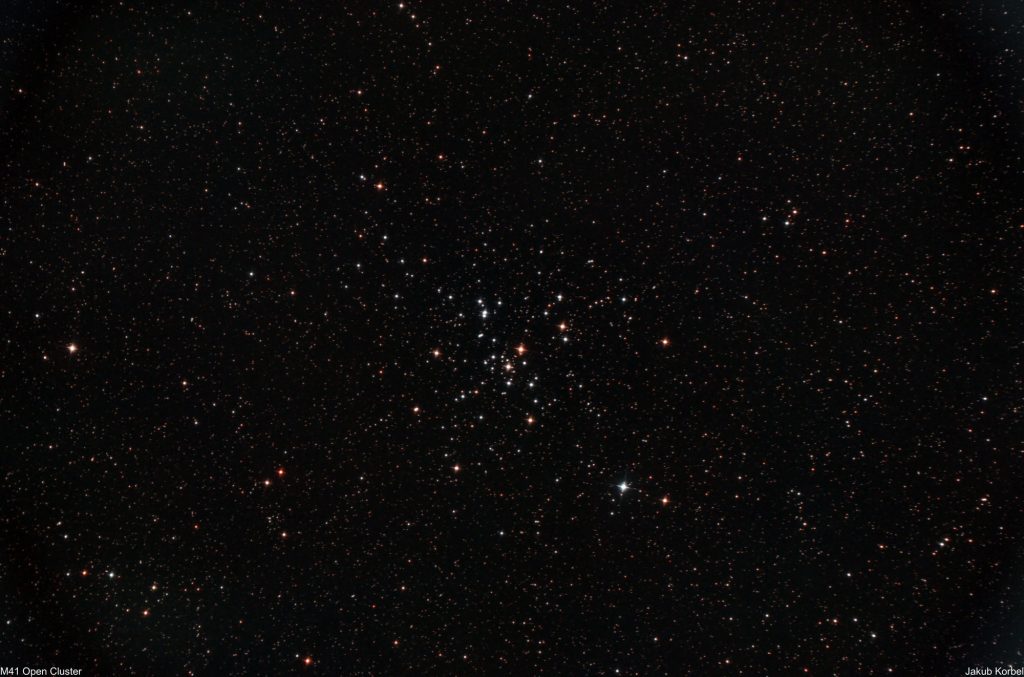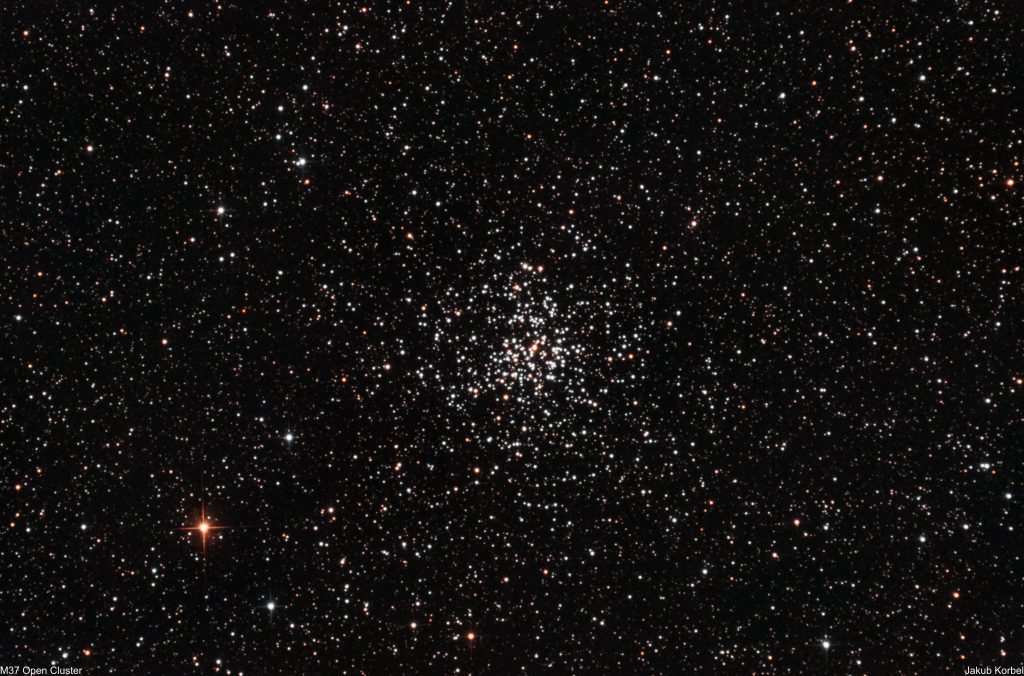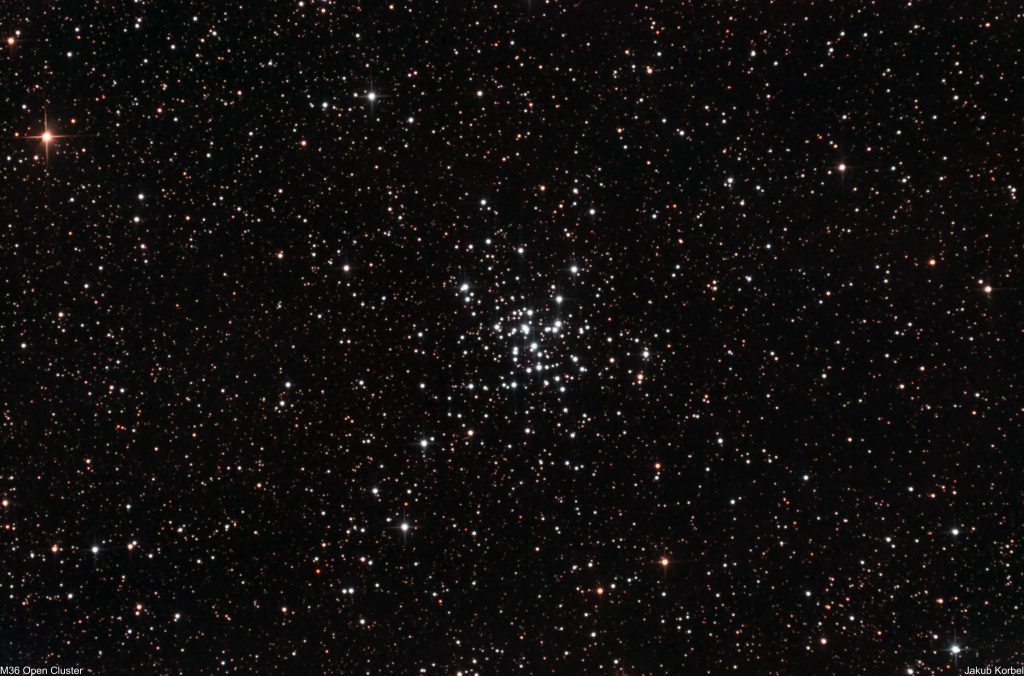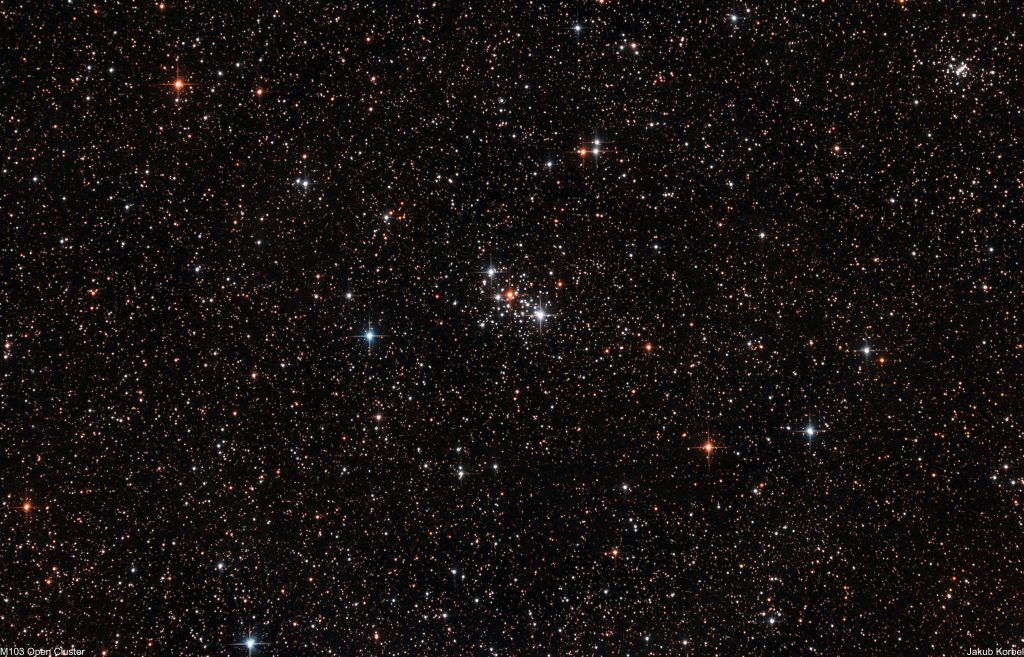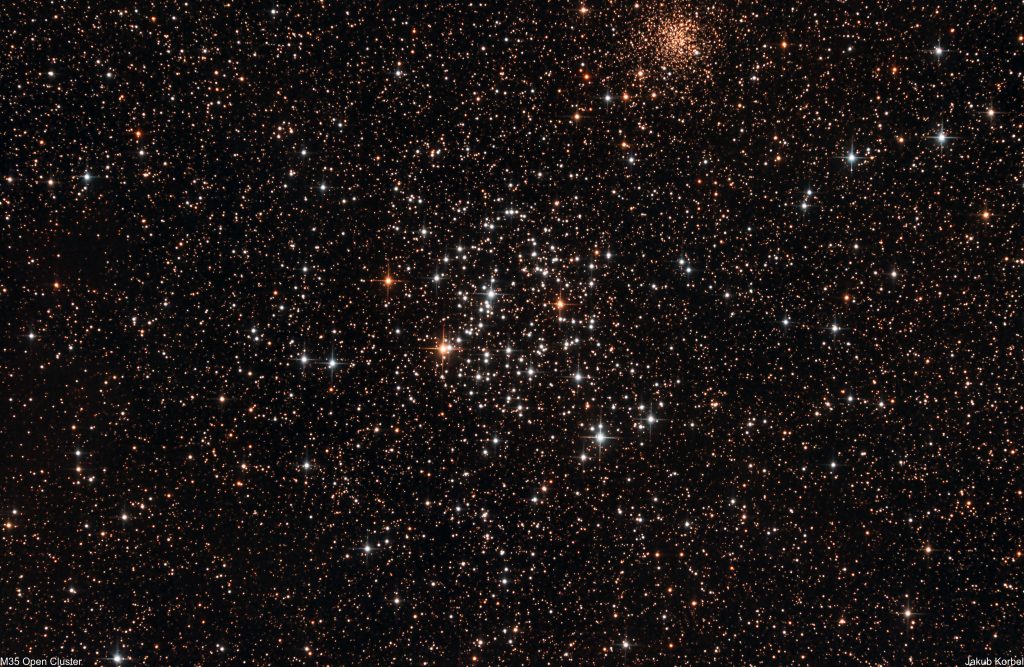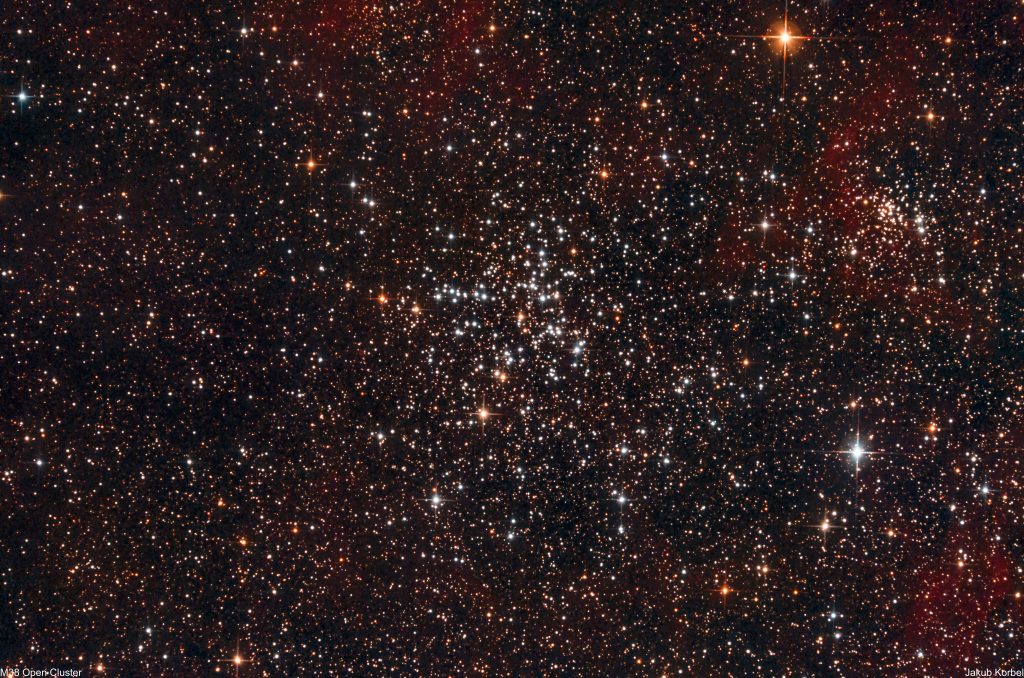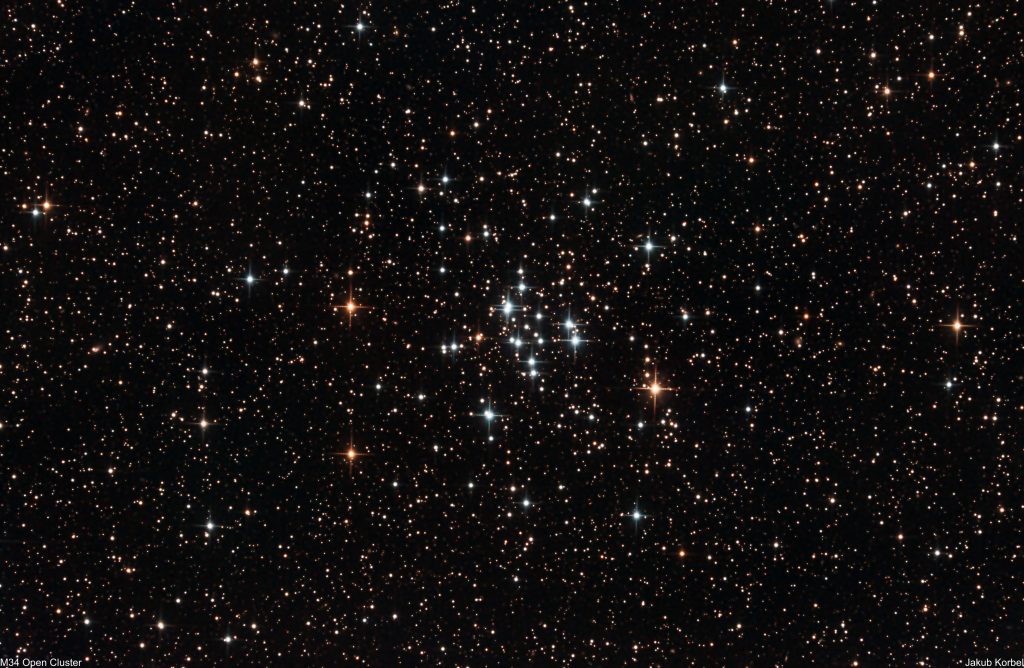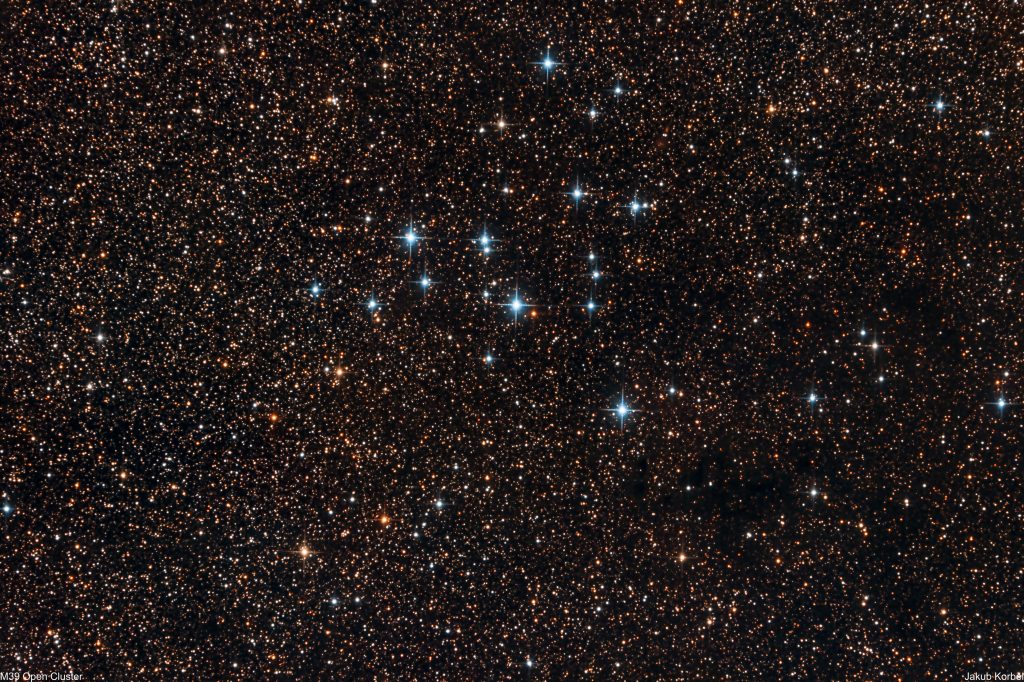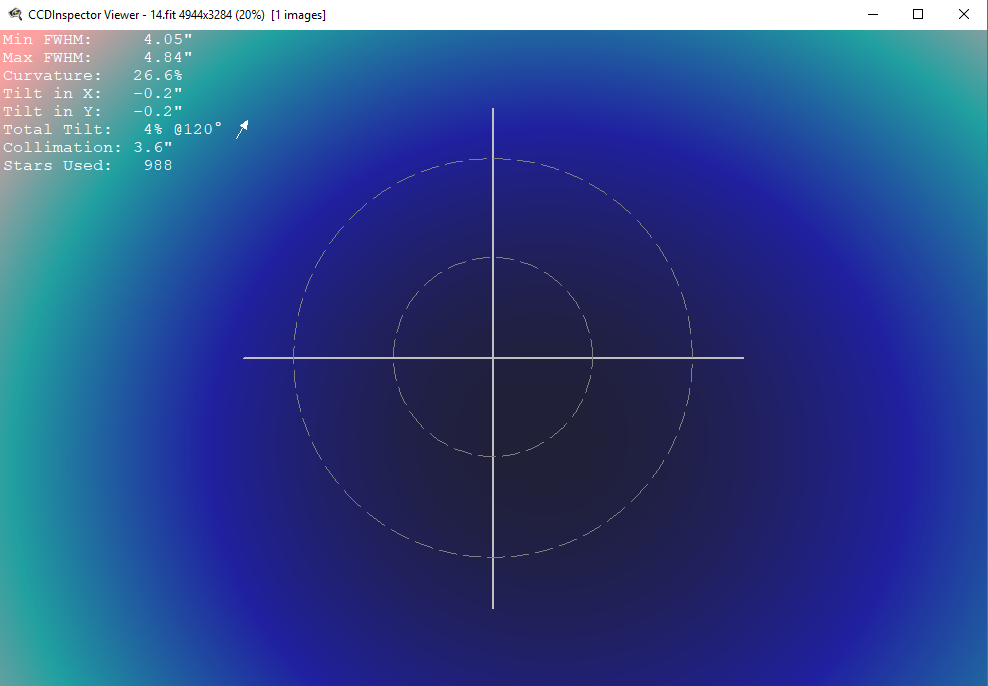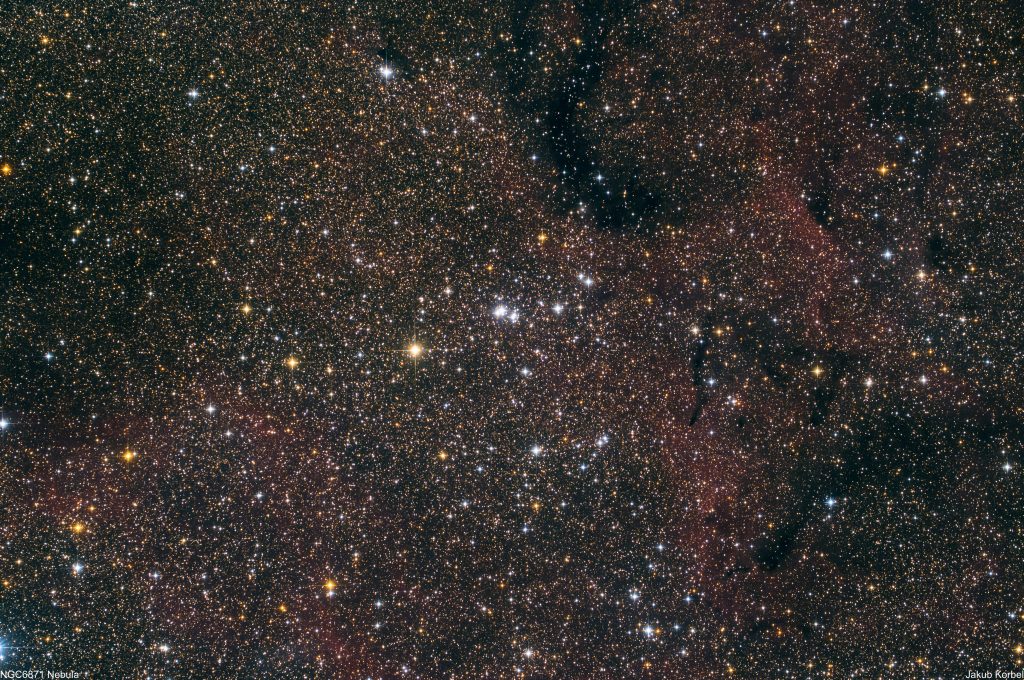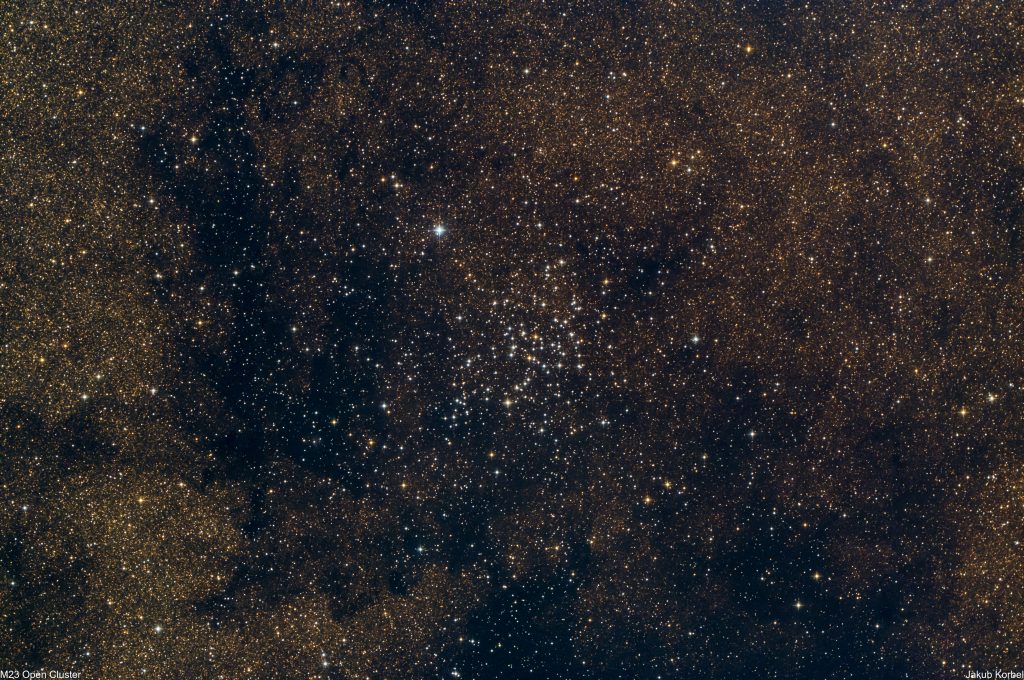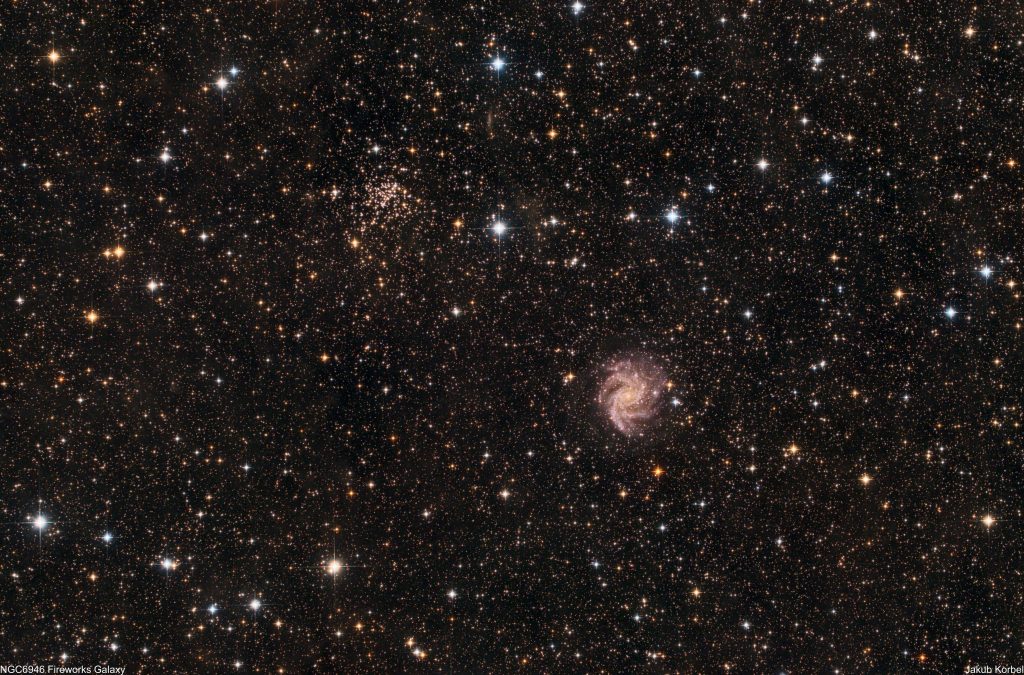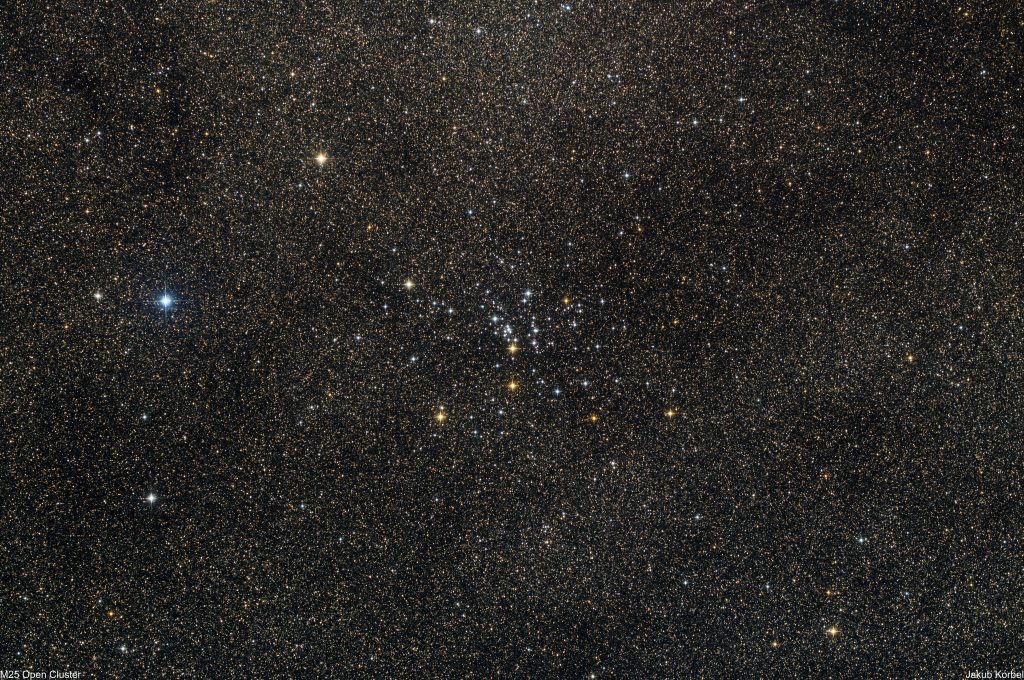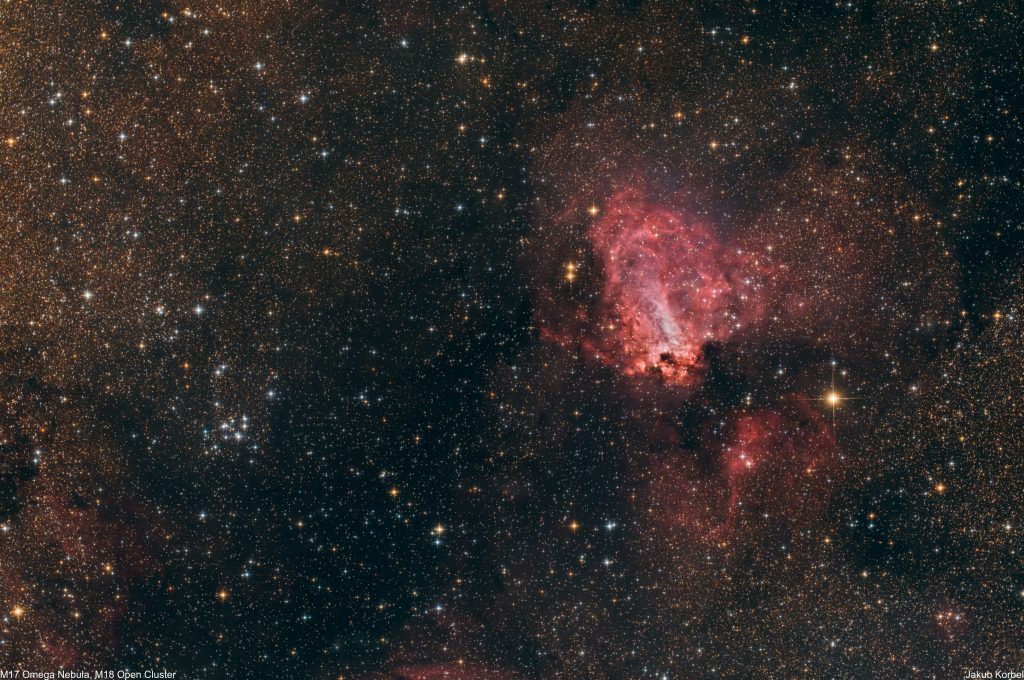Southern Pleiades, just like the northern Pleiades is an open cluster, located in the constellation Carina. Unlike the northern sibling, this cluster is not associated with nebulosity. However, some dark nebulae can be found around. This is because the cluster is located just a few degrees from the galactical equator.
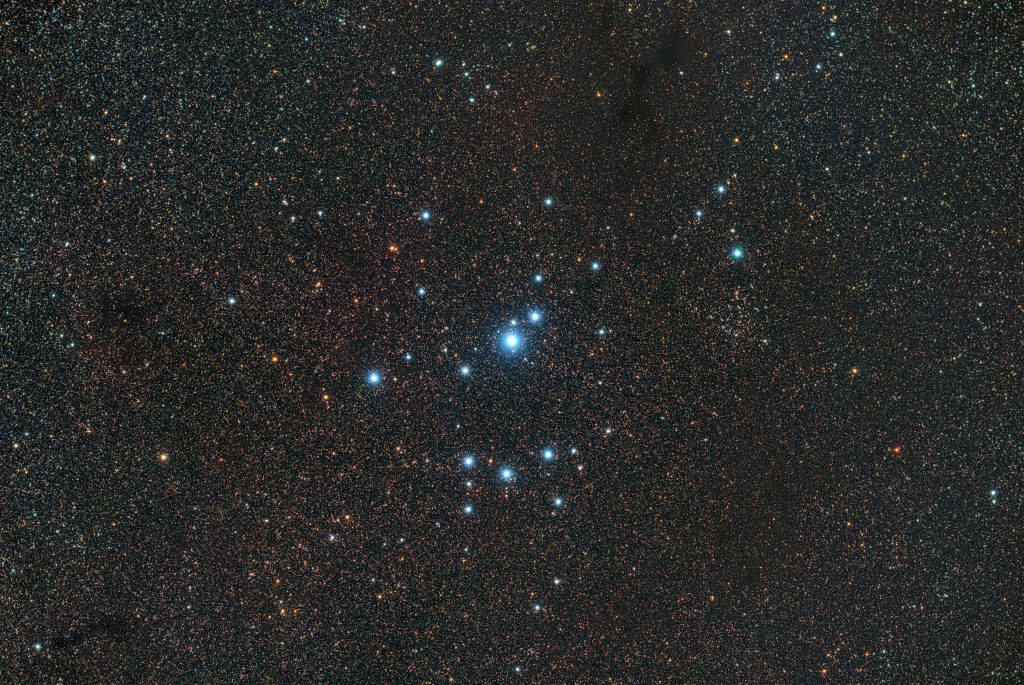
| Telescope | Sharpstar 94EDPH |
| Aperture | 94 mm |
| Focal length | 414 mm |
| Mount | Rainbow Astro RST 135 |
| Autoguiding | ZWO 174MM, QHY Mini Guide Scope |
| Camera | ZWO 2600MM @-10°C |
| Corrector | F4.4 Quad Reducer |
| Filters | Antlia LRGB |
| Exposure | 43x180s RGB, Gain 100, bin 1x1, |
| Date | 2022-06-01 |

